Ryan Hall's Blog, page 304
January 6, 2016
Hal Koerner’s 50-Mile Training Plan
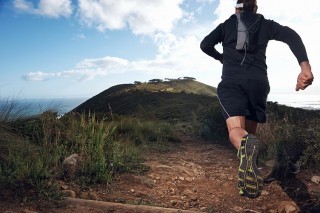
Photo: Shutterstock.com
Adapted with permission from “Hal Koerner’s Field Guide to Ultrarunning” [VeloPress, 2014]
This 50-mile training plan is laid out to be progressive, with a healthy and exciting buildup of mileage and intensity. You’ll find the weekly mileage to be straightforward and easy to follow. There are also targeted workouts in the plan, built in alongside your miles, which will build your strength and also give you opportunities to customize the intensity and duration of your workouts.
Key Workouts
Tempo Runs: Tempo runs are inserted during peak training weeks to enhance the feel of a race-day effort and to make your body more efficient for the duration of the event. The key is to work on your rhythm and tempo for 30-60 minutes at a comfortably hard pace. Warm up and cool down with a couple miles of easy running.
Fartleks: Fartleks (Swedish for “speed play”) are designed to provide some change of pace for the legs, since most of the running at this time is at an easy pace. For fartlek training, run a 1-minute surge every 6 or 7 minutes for the entirety of the run. This surge is perhaps 15 to 20 seconds per mile faster than tempo pace. At the end of the surge, simply return to your relaxed rhythm.
Hill Repeats: Hill repeats are another tool for building strength, and they also give you greater confidence come race day. Locate a consistent grade on which to perform your repeats. The key is to do a sustainable effort for 90 seconds followed by a 2- to 3-minute recovery, and to repeat this 10 times. Ideally, you would work this exercise into the designated run, perhaps running to your preferred stretch of climb as a warm-up and back again for the cool-down.
FREE 50-Mile Training Plan
Click here for the printable PDF: 50-Mile Training Plan
The post Hal Koerner’s 50-Mile Training Plan appeared first on Competitor.com.
Workout of the Week: Mile Repeats

Mile repeats are an effective workout regardless of your training and racing goals. Photo: www.shutterstock.com
If you’ve been a competitive runner for a while, chances are you’ve done a session of mile repeats at least once in your life, if not on dozens and dozens of occasions. And while running four fast laps around a track multiple times—or repeating a sequence of mile repeats on the road or trail—doesn’t look all that exciting on paper, it’s an effective workout regardless of your training and racing goals.
Mile repeats can work wonders for 5K-10K runners, half marathoners and marathoners by manipulating the intensity, number of reps, recovery and even terrain to suit your needs. Why? At a little over four minutes (for very fast runners) to 8 or 9 minutes in duration, mile repeats are long enough to build race-specific strength and endurance and challenging enough to help improve your mental game when doubt sets in and focus starts to fade.
So how can you make mile repeats work for you? Use the suggested workouts below as a guideline for implementing them into your own training schedule.
5K-10K Training
Why: When preparing for 5K-10K racing on the roads, track or cross country, a set of early season mile repeats run slower than 5K-10K race pace a with short recovery between reps will help you to develop the strength to handle the faster, more intense race-specific workouts later in the training cycle. As you get closer to your goal race, say 4-8 weeks out from the event, running your mile repeats at goal race pace or faster will help you to dial in the specific endurance required to maintain goal pace for 3.1 or 6.2 miles.
When, how many and how fast: Beginning 12-16 weeks out from your goal 5K-10K, running a set of mile repeats once every two weeks is a great way to build strength and improve endurance along with regular long runs, hill workouts and tempo runs. Aiming for 5-8 x 1 mile at half-marathon pace (roughly 15-20 seconds per mile slower than your 10K race pace) with 60 seconds recovery between reps can be a great complement to (or substitute for) tempo runs in your training schedule. About eight weeks before your goal race, maintain the frequency of your mile repeats, but shift the emphasis by speeding up to 5K-10K race pace and/or reducing the number of reps and increasing the amount of recovery time between intervals. For someone focused on the 5K distance, 4 x 1 mile at goal 5K race pace (or 5-8 seconds per mile faster) with 3 minutes recovery between reps is a great workout six weeks out from race day. Two to three weeks out, 3 x 1 mile at goal 5K race pace with 90 seconds recovery between reps is a very tough session, but one that will give you a good indication as to whether or not you’re ready to maintain that pace for 3.1 miles without a rest.
For a 10K-focused runner, shooting for 5-6 x 1 mile at 10K race pace (or 10K race pace minus 5-10 seconds a mile) with 3 minutes recovery between reps is a great workout six weeks out from race day. Repeat this workout four weeks out from the race, maintaining the same number of reps but slicing 30 seconds off your recovery between each one. Finally, two weeks out from race day, do the workout one last time, but only give yourself 1:30-2:00 recovery between reps. If you can nail that one and finish strong, you’ll know you’re ready to smash your goal!
Half Marathon-Marathon Training
Why: For half marathoners and marathoners, a faster set of mile repeats can provide some much-needed punch to your volume-packed training schedule. But, you can also slow down a set of 1-mile reps and shorten the recovery to help improve your ability to dial in your race rhythm while breaking up the monotony of a long, sustained half-marathon or marathon-paced workout.
When, how many and how fast: When training for half marathon and marathon, running 3-6 miles worth of intervals at 5K-10K race pace every couple of weeks can help bring some pop back into your mileage-laden legs. Unlike 5K-10K focused runners, however, there’s not really a need to shorten the recovery during these types of workouts as you get closer to race day—the goal of these faster workouts is to help improve your efficiency, work on turnover and maintain an element of speed in your training schedule. Over the course of a 12-16 week marathon training program, doing faster workouts such as 3 x 1 mile at 5K race pace with 3 minutes recovery between reps or 5-6 x 1 mile at 8K-10K race pace with 2-2:30 recovery between reps, once every two weeks is a great complement to your more half-marathon and marathon-focused interval sessions and tempo runs.
To help develop your half-marathon and marathon-specific fitness, however, slowing your mile repeats down to half marathon or marathon pace, increasing the number of repeats and shortening the recovery between reps will help you to work on your race rhythm in small chunks. An early-season workout such as 10 x 1 mile at goal marathon pace with 45-60 seconds recovery between reps can help you dial in pace and build strength for longer tempo runs at goal marathon pace later in the training cycle. For half marathoners, a session of 5-8 x 1-mile repeats at half-marathon pace with 60 seconds recovery between reps can be a great early season workout or even serve as a substitute for a tempo run later in your training schedule. Or, mix the two paces in an “over-under” workout: 8-10 x 1 mile, alternating between half marathon pace followed by 90 seconds recovery on the even-numbered reps and marathon pace followed by a 60-second rest on the odd-numbered intervals. The possibilities are essentially endless!
RELATED: Everything Runners Need To Know About Interval Training
The post Workout of the Week: Mile Repeats appeared first on Competitor.com.
Everything Runners Need To Know About Interval Training

All types of interval training depend upon a correct pairing of the faster repetition and recovery interval to ensure maximum benefit. Photo: Mario Fraioli
If you’re like a lot of runners, you might think that the most crucial element of interval training is the faster running—repetitions usually run at current or goal race pace. You figure that you run a bunch of reps at race pace, gradually cut down the recovery interval between reps over the course of a few weeks, and then finally cut out the recovery intervals altogether as you toe the start line for your target race.
Only one problem: Your body doesn’t work that way.
Instead, your goal for interval (or repetition) training should be to target a specific physiological component of your running fitness—not a pace—and then accumulate the maximum amount of work possible for that component. These components can include your nervous system, cardiovascular system, muscles, mitochondria (the aerobic power plants in your muscles), energy systems, and more. The key to applying a correct workload begins with understanding that there are two crucial elements—not one—in your workout: the faster repetition and the recovery interval. It’s the correct balancing of both that results in a successful workout.
A Brief History Lesson of Interval Training
To understand the relationship between repetitions and recovery interval, it’s valuable to recall the birth of interval training. But first, let’s clarify how we’ll define the two elements of interval training in this article:
Repetition: The workout’s higher-intensity running periods (e.g., the “400s” in a 12 x 400m session).
Interval: The recovery period between repetitions.
In the late 1930s, German coach Woldemar Gerschler, influenced by cardiologist Hans Reindell, created interval training as a way to increase the amount of blood pumped by the heart with each beat, better known as “stroke volume.” Gerschler had his athletes run short, intense repetitions (100-400 meters) to raise their heart rates to 180 beats per minute, at which point they quickly transitioned to a recovery interval (e.g., walking or slow jogging). During this recovery interval, returning blood created a momentary increase in pressure within the heart’s chambers, stretching the chambers and triggering an adaptation that would eventually result in an average heart volume increase of 20 percent. The recovery interval lasted until an athlete’s heart rate dropped to 120 beats per minute, at which point he or she launched into the next repetition. When an athlete’s heart rate took longer than 90 seconds to slow to 120 beats, the workout was ended.
Interval-trained athletes soon shattered world records at 400 and 800 meters. But your main takeaway should be that it was the correct pairing of repetition and recovery interval that resulted in the desired training adaptation.
The post Everything Runners Need To Know About Interval Training appeared first on Competitor.com.
January 5, 2016
5 Steps to Engage Your Glutes During Strength Training

Photo: Shutterstock.com
If you’re a regular reader here at Competitor.com, you’ll have definitely come across the importance of strength training for distance runners. Lifting weights can build a more resilient body and correct for muscle imbalances that tend to develop after distance running for many months and years.
Routines that involve functional exercises such as deadlifts and squats can strengthen the legs and hips, if performed correctly. However, many runners are novices in the gym and cannot activate their glutes effectively when performing these exercises.
RELATED: 6 Exercises to Work Your Glutes
Here are 5 steps to effectively activate your glutes during strength training:
1. Open up those hip flexors
Start each strength training session with the low band split squat. This exercise will strengthen your legs but will also provide your hip flexors with a wicked stretch. The hip flexor muscle group is commonly tight in runners and having optimal length in these muscles will facilitate better glute muscle activation.
How: Hold a handle of a band that is attached to a low anchor point with your right hand. Step back to remove slack from the band then take a large step back with your right leg. Land on your big toe joint, get tall and squeeze your right butt-cheek. Keep your arm straight and without loosing your butt squeeze, bring your right knee toward the ground. You should feel a burning stretch in front of your right hip and thigh. Pause just before your right knee touches the ground. Hold this pose for 5-seconds. Return to standing and perform 10 reps. Complete two sets per leg. See a video here.
The post 5 Steps to Engage Your Glutes During Strength Training appeared first on Competitor.com.
New Balance Unveils 2016 runDisney Running Shoes
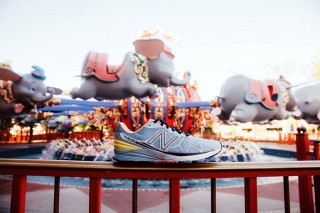
New Balance has released images of its new Disney-themed shoes that will debut at the Jan. 6-10 Walt Disney World Marathon in Orlando, Fla. The shoes, which will only be available at runDisney race expos, will have retail prices from $124.95 (“Dumbo” and “Ariel” Vazee Pace neutral shoes) to $139.95 (“Red Carpet Minnie” and “Red Carpet Mickey” 860v6 stability shoe). (A kids version of the “Dumbo” and “Ariel” 860v6 will also be available for $79.95)
Photo Gallery
1 of {count}
Back to Start
View Larger Image

New Balance Mickey Red Carpet 860v6, $139.95
View Larger Image

New Balance Dumbo Vazee Pace, $124.95
View Larger Image

New Balance Dumbo Vazee Pace, $124.95
View Larger Image

New Balance Ariel Vazee Pace, $124.95
Related Galleries

Exclusive: First Look At New Balance 2014 runDisney Shoes

More Galleries
The post New Balance Unveils 2016 runDisney Running Shoes appeared first on Competitor.com.
Anton Krupicka Joins La Sportiva Mountain Running Team

Ultrarunner Anton Krupicka, shown here scrambling up the First Flatiron in Boulder, Colo., has become adept at rock climbing and backcountry skiing in recent years. Photo: Peter N. Jones
Anton Krupicka, one of the world’s top ultra-distance mountain runners, has signed a new brand sponsorship deal. It’s not a huge news story, but it’s a sign of how Krupicka’s interests in mountain sports have expanded in recent years, and indicative of the growing trend of the merging of endurance sports and technical mountain pursuits.
In addition to being a top-tier ultra-distance runner, the 32-year-old Boulder resident—once an icon of the minimalist running movement—has also become adept at rock climbing, scrambling, backcountry skiing and ski mountaineering, as well as, to some extent, endurance cycling.
The ironic twist is that Krupicka has rejoined the La Sportiva Mountain Running Team, the sponsor he was backed by when he burst on the scene after the first of his two Leadville 100 victories in 2006. While Krupicka served New Balance, his previous sponsor, quite well with top finishes in high-profile trail running finishes, this figures to be an even better situation for both Krupicka and La Sportiva. In addition to mountain running shoes and apparel, La Sportiva also makes rock climbing, mountaineering and backcountry skiing gear. It doesn’t hurt that La Sportiva’s North American office is based in Boulder, either.
RELATED: Anton Krupicka—Mountain Man, Trail Champion, Running Icon
Krupicka says he is looking forward to pursuing bigger mountain objectives this year that combine his passion for running, climbing and skiing to “create some epic speed link-ups in the coming seasons.”
“Anton is a true mountain athlete and we’re pleased to welcome him back to the La Sportiva family,” says Jonathan Lantz, president of La Sportiva North America. “He’s a natural fit with the La Sportiva program and will serve as the face of not only our Mountain Running footwear and apparel programs, but also represents La Sportiva’s commitment to moving quickly and efficiently through mountain terrain. We can’t wait to see what he accomplishes.”
RELATED: Anton Krupicka—Why I Run
Krupicka has been running and racing since 1995. He ran his first marathon at 12, competed collegiately at Colorado College and there discovered the joy of long mountain endurance runs. In addition to being a two-time winner of the Leadville 100, he was also the U.S. 50-mile trail champion in 2009 and 2010, finished second at the 2010 Western States 100 and set several FKT (“Fastest Known Time”) records on trails. Although he was limited by injuries during the past two years, Krupicka won the Lavaredo Ultra Trail 120K in Italy in 2014 and placed sixth at the Transgrancanaria 127K race in Spain in May 2015.
“I’ve always admired the people and products that make up La Sportiva,” Krupicka said. “I’m delighted to come back to the team and pursue some ambitious challenges in the years ahead, including some FKT attempts that I’m still dreaming up. La Sportiva’s footwear and apparel is top notch and I’m excited to represent the brand in all that I do.”
RELATED: Anton Krupicka Writes About His Favorite Route on Longs Peak
The post Anton Krupicka Joins La Sportiva Mountain Running Team appeared first on Competitor.com.
The Favorite: Interview with Shalane Flanagan
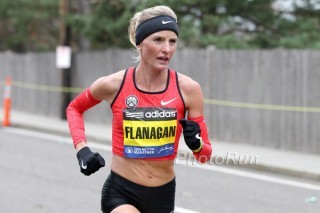
Photo: PhotoRun.net
When the top female marathoners in the U.S. line up at the Olympic Trials Marathon on Feb. 13 in Los Angeles, all eyes will be on defending champion Shalane Flanagan —and with good reason.
Since winning the 2012 Trials in event-record time (2:25:38) and finishing 10th at the Olympic Marathon in London, Flanagan has not let her foot off the gas. She’s added more national titles in cross country, road and track to her already extensive racing resume, and has posted the two fastest marathon times by an American female during the Olympic Trials qualifying period (2:22:02 and 2:21:14 at Boston and Berlin, respectively, in 2014). Flanagan was fourth at Boston in 2013, seventh in 2014 and ninth this past year (although she could move up a spot in 2013 and 2014 pending whether or not drug cheat Rita Jeptoo is stripped of her titles), and also took third at Berlin in 2014 when she ran the second-fastest American time in history.
Would you consider yourself the favorite to win the Trials, or at least a favorite to make the team?
Yeah, I would say on paper I’m one of the top three favorites to make the team. For sure.
Heading into this year’s Trials race, what’s different from 2012?
In 2012, the Trials was actually only my second marathon so I still felt pretty unsure about the distance. My initial experience in New York [2010] was basically almost perfect. I completed the marathon and beat some women I thought were unbeatable at the time, like Mary Keitany, and came in second to Edna Kiplagat. I had an unbelievable experience and I was kind of terrified that I hadn’t gone through some of the tougher moments of the marathon. It actually felt like a natural fit, which was great, but I was kind of terrified thinking that it wasn’t a real experience, like somehow I lucked out and I didn’t experience the terribleness that the marathon can bring. So I was actually really nervous for the Trials because the first one was very seamless and I felt unbelievable the entire way, so I was nervous that I was going to get a different experience. I felt like I prepared really well for the Trials because I was really scared about having a negative experience, so I feel much more seasoned now and have had a variety of experiences since, so I feel like I’m prepared for anything on the day, any style of race. Any experiences my body has gone through I now know how to handle a little bit better.
What are some of the biggest things you’ve learned about the marathon since your last Trials experience?
I think the beautiful thing is that a lot of the work I’ve done since my first one has accumulated. I can go away from the marathon and go back to the track like I did [last] summer and jump back in it and my body remembers how to do it again, which is great. I don’t have to keep up this high volume all year round to be a marathoner so I’m appreciative that all those miles I’ve logged over the past five years or so are still in the legs and the body still remembers how to go the distance. So that’s nice to know—that I don’t have to out-do myself every time, and, in fact, I feel like I can actually do a little bit less volume and a little more quality now, which is fun for me. So overall, learning how to actually race the distance rather than just completing it is always an art form and I feel like I’ve gotten to have a variety of experiences since the Trials four years ago and learned how to actually race over the full distance.
What would be more satisfying: to break the American record in the marathon or be on the podium in Rio?
I would pick the podium for sure. The American records are really nice and I’ve had the luxury of having those experiences on the road and on the track, so obviously they’re really nice accolades, but an Olympic medal is forever. It’s like saying you’re an Olympian—no one can take that away from you, but records can be taken away. Someone can always out-do you, out-run you, but with the medals they’re pretty permanent, so that’s for sure what I would take.
How much longer do you see yourself competing?
Honestly, as long as my body is feeling good and I have the drive, I can for sure say that for the next two years I want to give everything I have toward my running. I think that the problem a lot of women start to face is taking a time out to have a family, so that would really be the thing that dictates if I would change things up or not. But I can honestly say I have two really big goals over the next two years, so I’ll give everything I can up until those two years are up and then maybe my role would change as an athlete a little bit, but for sure, the next two years I can envision living the same lifestyle.
Tell me about those two big goals.
Making my fourth Olympic team is really important to me. It just shows—hopefully—the consistency of my career and it just would be a nice kind of culmination because I just don’t know if I would go for a fifth Olympics. So to have this fourth would be great and I honestly believe there’s a great opportunity this Olympics—specifically with a lot of cleaning up in the sport—and I just have this gut feeling that it will be the most honest race I compete in at this kind of level. I just feel like it’s a huge opportunity and I’m more excited than ever to compete in this Olympics because of it. Honestly I feel like whoever makes the team has a good shot at a medal. It’s just an exciting proposition to be racing. And then my second goal is, obviously, to win Boston—just one of those little goals I’ve had for a while.
What needs to be done for the sport to be cleaned up and what is an appropriate punishment for athletes who have cheated their way to the top?
I think a lot of American athletes, including me, are on board for lifetime bans. I just don’t think there’s a place for athletes who have taken that path. I don’t think they should be part of the sport if they don’t respect their peers or the history of the sport or the integrity of it. It’s a pretty big offense in my mind. I would love to see lifetime bans. I also believe that who you surround yourself with is a huge representation of you and I think in order to really clean things up, you have to look at who is surrounding these athletes and who are they associating themselves with, and I guarantee if you look at these athletes it’s not just them—it’s an entourage and a circle. So, if you see some athletes training with other athletes who have been convicted of doping, there’s a strong potential that those other athletes are doping. And then you look at the agents, you look at the network, and then you look at the coaches and I think that when an athlete needs to serve a ban, then the entourage and the circle needs to be highly inspected because if an agent or a coach knows they could potentially get banned if their athlete gets banned, that really has some deep repercussions throughout the sport and I think people would really think twice about things.
You’ve won at multiple levels, captured medals and set records. When you do retire—years and years down the road, of course—what would you like your legacy to be?
In a weird way I was talking to someone about that this past weekend in San Antonio, and kind of talking about it actually made me think, “What do I want to be remembered by?” I love the accolades and records and being a top American and medals—they’re what I dreamed of as a little girl—but I think what I would like to be remembered by has kind of evolved over the years. I honestly think I’m at the point of my career where I get more out of seeing my teammates excel as much as having my own moments. This summer, for example, feeling like I was genuinely a part of Emily [Infeld]’s success on the track and helping her get back to a really high level and exceeding her dreams. I took so much joy in that and being a part of that process that it made me realize that I love being a teammate and I love helping other athletes fulfill their goals. I’m still super competitive but I’m really good at being just as happy for someone else when they have their moments because I’ve been fortunate to have my own moments. There’s no need to be stingy about the moments—I can share them. Just to be a part of such an amazing team and group of people is really important to me, so I think that is what I hope to be remembered by: someone who was a great teammate and helped elevate not only my own running and American distance running but my teammates that I’m surrounded by daily and having had a positive impact on their lives.
Building off that answer, do you think you’ll ever get into coaching?
Oh gosh, I would love to and this summer kind of confirmed this gut instinct that I had that I’d like to do that. I feel like I’ve taken on a little more of a leadership role just because some of these women are literally 10 years younger than me, which is obvious some days and then there are other days where I think we’re the same age. And then there’s moments when I’m like, “We’re definitely not the same age!” I get so much joy from coaching that I feel like I can easily transition out of the athlete role.
What are some of your other interests outside of running and how you hope to expand upon those things when your career winds down?
Over the past couple years, in the fall when there’s been down time, I feel like there’s always been a calling to do something more, so I’ve done a lot of volunteer coaching, whether it’s at the collegiate level, or the little kids of our Bowerman group at the junior Olympic level. I just like being around other runners. My husband is the coach of the Nike+ Run Club and I’ll go out and support that group of local Portland people who want to get out at 7:30 to go run a track workout in the rain. I definitely thrive on the group environment and support because there’s really no difference between us. Everyone hates getting up in the morning and running in the rain. They have the same feelings that I have about getting up early and doing that, so it’s just kind of nice to get up early and embrace that together. The coaching aspect is definitely something I’ve kept up since college and just helping people get athletic and stay fit. My cookbook is a more recent passion of mine. I’ve always enjoyed health and wellness and fitness but collaborating with a longtime friend of mine and developing ideas and trying to help female runners specifically, I think we can have a really great impact. It’s not about light and lean, it’s just about indulgent nourishment. I think it’s just going to be really tasty food and it’s really going to help runners realize that sitting down and indulging in really great food can be nourishing and social and fun. Those are the two things right now that I’m really into but who knows in the future what might be on my plate.
You are an east coast girl, but you’ve been based on the west coast for six years now. How has your east coast attitude and upbringing fit in on the other side?
It’s definitely starting to feel more like home. The Pacific Northwest is just stunning and beautiful. When I first moved out here I definitely had a tough adjustment to be honest. I was used to a much faster-paced life, I wasn’t used to people just chatting me up at the grocery store and I didn’t trust them because they were so nice. East coasters can be super nice, and we’re very loyal people, but in everyday life, like on a work weekday, people aren’t just chatting you up in the grocery store. People here are just really friendly and will talk to you for as long as you want about anything and that caught me really off-guard at first. I can be a little bit crass with my language and I definitely had to tone that down quite a bit. Those are probably the big things, but I can’t lie, it’s so beautiful out here and I can’t get over how outdoorsy people are year-round. I definitely miss the east coast and I miss my friends, and they’re all super loyal and just really great people, but yeah, I’ve definitely adjusted to the west coast a bit more.
The post The Favorite: Interview with Shalane Flanagan appeared first on Competitor.com.
Facebook CEO Mark Zuckerberg Pledges to Run 365 Miles This Year

Photo: Shutterstock.com
Mark Zuckerberg, the billionaire founder of Facebook, has a new hobby in mind for 2016—running.
Zuckerberg announced that he’s planning to run 365 miles in 2016, and started a Facebook group encouraging users to join him. More than 70,000 users signed up as of Tuesday.
“This is a lot of running, but it’s not a crazy amount,” Zuckerberg said in a post. “It’s a mile a day, and at a moderate pace it’s less than 10 minutes of running per day.”
Zuckerberg calls the challenge “A Year of Running” and it’s piggybacking his 2015 challenge “A Year of Books” where he read a new book every two weeks.
Zuckerberg interacted with a number of users responding to his post, informing them that he uses the Nike+ running app to track mileage, and even said “we can take a day off” when someone reminded him that it’s a 366-day leap year.
One user chimed in, “I wish I had all the money in the world and time to run 365 miles!”
“You have one of those things,” Zuckerberg responded.
RELATED: How You Can Run 2,016 Miles in 2016 with a Virtual Running Community
The post Facebook CEO Mark Zuckerberg Pledges to Run 365 Miles This Year appeared first on Competitor.com.
How You Can Run 2,016 Miles in 2016 with a Virtual Running Community
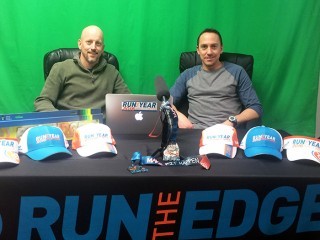
Tim Catalano and Adam Goucher have created a challenge for runners to try to run 2,016 miles in 2016 and developed a supportive community and virtual race expo to help get them there. Photo: Brian Metzler
If you’ve made any New Year’s resolutions last week, go ahead and break them today. Especially if one is something ridiculous like not eating ice cream in 2016 or something as unrealistic as trying to run at least 100 miles every single week all year long.
Creating resolutions, whether general and vague (getting in the best shape of your life) or fairly specific (running your fastest half marathon), typically don’t work if you don’t develop the structure to achieve those profound goals. Simply announcing our intentions to the world (or even just to yourself) on Jan. 1 isn’t enough. Even if well-intended, we often create tasks—like avoiding ice cream or running huge weekly mileage totals—that are too daunting, unrealistic or just plain improbable and, for those reasons, make them bound to fail.
You can—and should—still challenge yourself to accomplish big goals in 2016, but only with a realistically attainable system of goals and some kind of support system.
Adam Goucher and Tim Catalano, authors of the book “Running The Edge” found data that showed, not surprisingly, a majority of people who made fitness-related resolutions on Jan. 1 typically break them or forget about them within the first two weeks of the new year.
“The attrition rate is very high. By Feb. 1, most people are done.” Goucher says.
We’ve all been there, right? Life gets in the way. Sometimes it rains or snows. Injuries happen.
So what’s the alternative? Focusing on a few sensible, long-range goals with very specific targets and then develop a realistic structure of smaller, measurable tasks and stepping stones that will allow you to attain those goals. Consistency is the key and that means relentlessly doing your daily due diligence to reach those goals until it becomes a habit. But that can just be lip service that will get you into mid-February if you lose motivation.
As with the quest to achieve any big task, it takes a village or, in other words, an engaged community of people willing to support you. Joining a training group or hiring a personal coach are two good ways to give yourself a leg up, but even that can be limited to how you interact with your fellow runners and your coach.
RELATED: 3 Resources for Getting (and Staying) Motivated in 2016
Sensing that most people need a stoke of inspiration and a way to hold themselves accountable, Goucher and Catalano last year created Run The Year—a program that challenged runners to run 2,015 miles in 2015, either as an individual or as part of a team and provided built-in community support. The idea was an overwhelming success as more than 25,000 people took the challenge and more than 17,000 people remained active in its Facebook community through the end of the year.
Goucher and Catalano recently launched this year’s quest to Run The Year 2016—2,016 miles in 2016—and the response and enthusiasm has been almost overwhelming. They reached last year’s participant total in five days and it’s continued to grow into the new year.
It’s a simple concept: Commit to the challenge, log your miles as your normally would and earn rewards for every 100-mile benchmark and keep your stoke high from the support of the invigorating virtual community inside the Run The Year Facebook page and interactive website. Yes, it relies on the honor system, but you only need to be honest with yourself—and make sure you’re training authentically—to reap the benefits of virtual support, camaraderie and inspiration. (The stories, photos and videos participants submit are often amazing and sometimes tear-jerking.)
“We wanted to create something that could help people throughout the year to help them succeed in achieving a goal,” Goucher said. “How can we make people be accountable for the entire year and keep it fun and keep it motivating and bring a community aspect into it while encouraging as many people as possible to finish? We didn’t know where it would take us, but it took off immediately.”
This year’s program, which costs $25 for an individual membership, is also open to teams of two, three or four people, who can divvy up the workload in order to tackle the mileage goal. Along with access to a custom mileage tracker, the registration fee includes exclusive access to a first-of-its-kind online virtual race expo, which features several booths providing exclusive training, nutrition and injury prevention content from leading industry coaches and experts to help participants reach their goals.
Virtual running is all the rage nowadays. Several organizations have popped up to offer T-shirts, medals and various enticements to run a virtual race or a certain amount of miles—either for a charity or your own personal fitness. Virtual Race Series is an online company that is organizing more than a dozen virtual races this year. Its recent Resolution Run had 360 participants who ran or walked a 5K or 10K on Dec. 31-Jan. 1. Awards were given for the happiest photo, most scenic photo, most New Yearsy photo and the best group photo.
On Jan. 4, Facebook founder Mark Zuckerberg offered a challenge for people to join him in his quest run 365 miles in 2016 and follow along in a Facebook group. Even if you ignore that this is a leap year, that’s obviously a mile a day and although not very ambitious, it could be the answer for non-runners or taking their first steps to a healthier lifestyle. (In less than 24 hours, it attracted more than 340,000 “Likes” on Facebook.)
Before launching the Run The Year program last year, Goucher and Catalano were skeptical about the idea of virtual running. Why not just run a real race or log your training miles privately? But when they had more than 1,600 people sign up for its first two virtual races in 2014—they sent T-shirts for participants in their first race and T-shirts and finisher medals for the second one—and were able to raise $4,500 in charity donations for Guardian Angels Service Dogs and $6,500 for Girls on the Run, they realized there was something to it and a worthwhile reason to pursue it. In all, they donated nearly $11,000 to charities from their virtual runs last year.
“We realized, hey, there is something to this virtual running thing, but we wanted to make it unique and different and make it a year-round challenge and do it differently than anyone else does it,” Catalano said.
What surprised them with the first rendition of the Run The Year program was the community support that evolved and took on a life of its own.
“We have a huge range of participants, but everyone inside the community supports each other,” Catalano said. “We have people who have joined that have never run in their lives. They’re just starting off and many of them are walking their miles, and that’s great. And we have others who are training for half marathons and marathons and logging long runs on weekends.”
RELATED: New Year, New You? Only If You Make It Happen
The fact that they were once really fast runners themselves is irrelevant, but it’s their enthusiasm to get people running through motivational photos, inspirational words, silly humor, video blogs and, of course, virtual awards, T-shirts and finisher medals has been the impetus to the program’s success.
Then there are the special stories, like the woman who lost more than 100 pounds while logging her miles in 2015. She wound up logging more miles than Catalano, who, by the way, was a former collegiate distance runner like Goucher (who was also a 2000 Olympian).
“That’s the humbling piece. That woman did more than we did during the year,” Catalano says. “These people are doing our challenge and changing their lives.”
The post How You Can Run 2,016 Miles in 2016 with a Virtual Running Community appeared first on Competitor.com.
January 4, 2016
How Does Your State Stack Up On The Run?
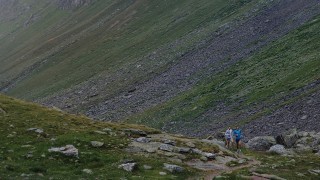
Photo: Courtesy of Strava
Strava, the GPS-based app and online platform that connects a virtual community of runners and cyclists, recently released some interesting 2015 data plucked from 71,944,680 miles and 14 million runs uploaded in the U.S. during 2015.
Some interesting state-by-state comparisons came up:
— California was the most active state, logging 3,490,235 activities in 2015—far ahead of runner-up Texas (860,021) and third-place New York (688,237).
— Massachusetts was the nation’s fastest state with an average pace of 8:56 per mile—one second faster than Washington, D.C. Tiny Rhode Island checked in third at 9:02/mi.
— Montana boasts the hilliest terrain, averaging 403 feet of elevation gain per run, beating out Wyoming by 10 feet.
— Louisiana averaged just 26 feet of elevation gain per run, the flattest in the country.
Here’s a look at some other numbers that stood out from Strava’s data:
— Men recorded an average pace of 9:03/mi, while women checked in at 10:21/mi.
— Women logged an average running distance of 7.1 miles, while men put up 8.2 on average.
— Sunday, Sept. 13, 2015 was the most active day for Strava users worldwide, with 271,413,904 miles uploaded.
RELATED: Can social apps hurt your training?
The post How Does Your State Stack Up On The Run? appeared first on Competitor.com.
Ryan Hall's Blog
- Ryan Hall's profile
- 21 followers



